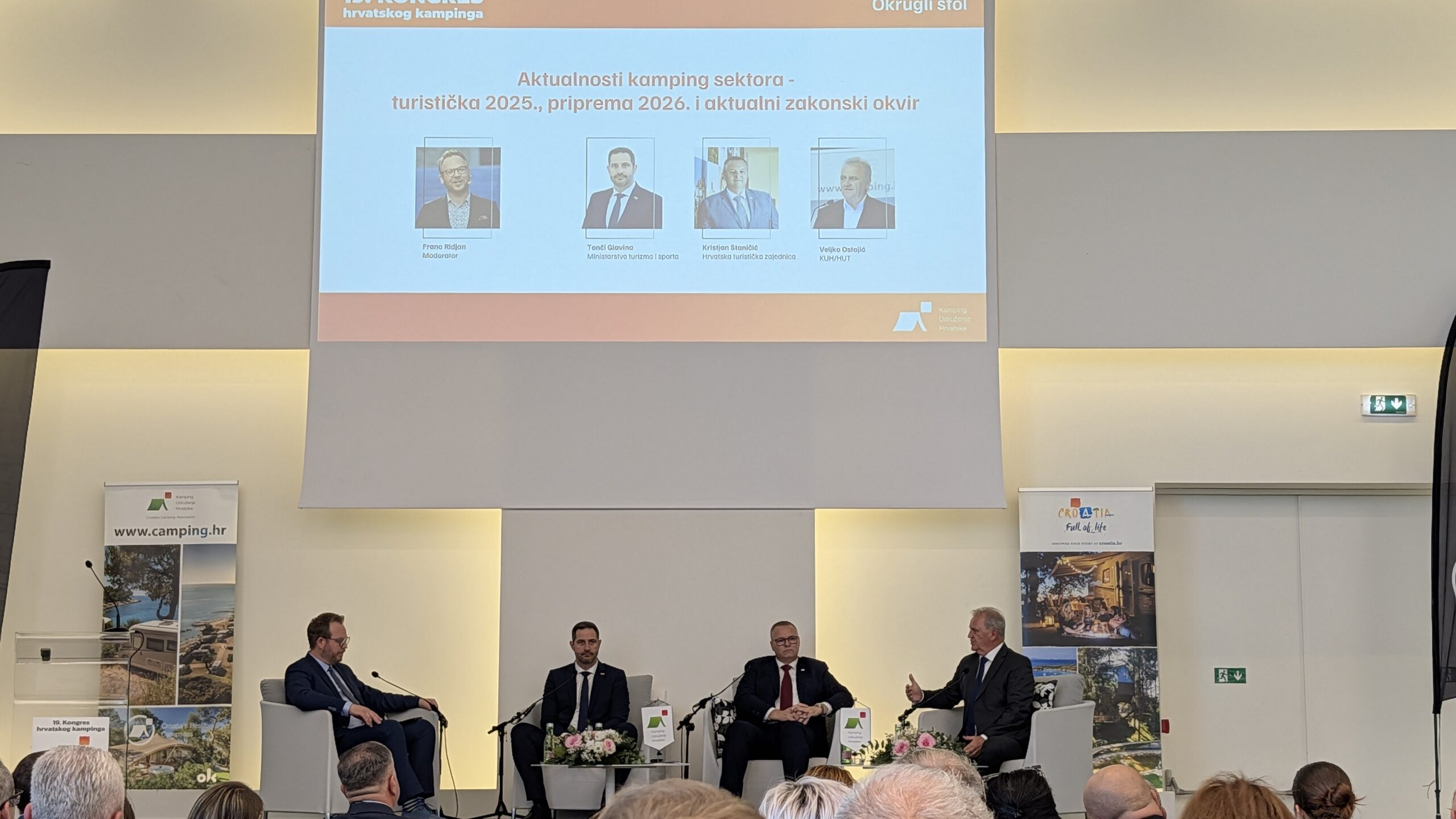As Croatia’s camping sector expands amid record visitor demand, government officials are tightening rules to curb illegal coastal construction and safeguard natural areas.
During the 19th Congress of Croatian Camping, senior leaders—including Tonči Glavina, Minister of Tourism and Sports; Kristjan Staničić, Director of the Croatian National Tourist Board; and Veljko Ostojić, President of the Executive Board of the Croatian Camping Association—outlined a sweeping legal overhaul that will clearly define “mobile homes” and give campsites a decade to comply with new spatial planning standards.
The new legislative package—comprising amendments to the Spatial Planning Act and related construction laws—seeks to reconcile tourism expansion with spatial sustainability.
Balancing Tourism Growth and Coastal Preservation
According to translated remarks delivered at the congress, the reforms, which leaders have yet to take a final position on, will classify mobile homes as “mobile equipment for prepared accommodation,” not permanent buildings. This clarification aims to stop the misuse of prefabricated structures disguised as mobile homes, which have proliferated along Croatia’s coastline over the past decade.
Officials emphasized that a 25-meter coastal zone will be off-limits to most new accommodation construction.
“The area of 25 meters is a crucial boundary zone that should be maximally protected from any kind of development,” one of the speakers said. Within that area, only communal facilities such as terraces, sanitary blocks, and sports amenities will remain permissible.
A Decade for Compliance
Existing campsites will have ten years to meet the new standards, allowing operators time to adjust without disrupting business continuity. The transition period covers both the removal of illegal fixed structures and the adaptation of compliant mobile homes.
Data shared during the session indicated that out of 76,000 registered camping parcels nationwide, approximately 16,000—or 22 percent—are occupied by mobile homes, with 5,500 of them within 100 meters of the sea.
Officials said this ten-year timeline was shaped through consultation with industry representatives from the Croatian Camping Association and other trade bodies.
“We have been in intensive communication, regularly meeting, exchanging ideas,” one speaker noted, underscoring collaboration with key stakeholders such as KUH and HUD throughout the drafting process.
Enforcement and Industry Impact
The State Inspectorate has already taken enforcement action against several noncompliant camps, and the government expects that clearer definitions will eliminate ambiguity. The Ministry of Tourism and Sports described the new rules as a necessary correction to restore integrity in the sector.
“Campsites are protectors of space, not exploiters,” said one speaker, adding that the reforms aim to strengthen the image of Croatia’s campgrounds as sustainable tourism leaders.
The legislation also reflects shifting traveler expectations. Officials observed declining demand for traditional tents and motorhomes, and growing interest in higher-quality mobile accommodations—particularly during spring and autumn shoulder seasons.
The announcement was made during the 19th Congress of Croatian Camping, held October 27–29, 2025, at Amadria Park Hotel Ivan in Šibenik. Organized by the Croatian Camping Association, the congress gathered industry leaders and public officials to define sector priorities for the upcoming season.
As the event continues, sessions will explore regulatory updates, digital transformation, and sustainable development in the camping and glamping markets. Modern Campground is on-site and will continue sharing insights from these discussions for industry readers.


